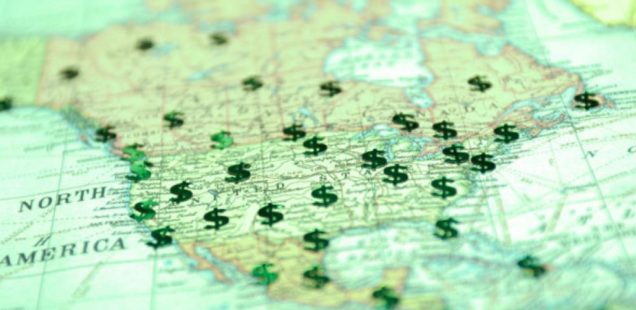
The Biggest Cause of the Next Recession? Wary Consumers
The big question at the International Monetary Fund’s annual gabfest last week was why global economic growth is chronically slow and what can be done to shift into a higher gear.
I.M.F. and World Bank economists have many ways to explain why “slow growth is a fact of life in the post-crisis world,” as Olivier Blanchard, formerly the fund’s chief economist and now a fellow at the Peterson Institute for International Economics, put it in a succinct Financial Times commentary last week. The fund spells out the reality in technocratic detail in its latest World Economic Outlook.
Related: IMF Cuts Global Growth Forecast, Warns of Stagnation Risk
Productivity growth is slower, populations are aging, China has transition challenges, oil producers are hurting, and Britain and Greece are creating problems in Europe. All of these weigh on global economic growth. Add to the list ISIS and the growing threat of global terrorism, and you have, well, a situation.
These are symptoms, but the disease is different. Growth is sluggish almost everywhere because consumers aren’t spending and businesses, logically enough, aren’t investing in new capacity. It’s all (or mostly) about demand.
While following the proceedings at the I.M.F. last week, I asked a friend who trades on eBay how business was. “You can’t sell anything unless you let it go for less than it’s worth,” he replied. “Nobody’s buying. Nobody knows what’s next. It’s something in the economy.”
That’s the anatomy of what ails the American economy and most of the world’s, too. And to suggest the sluggish growth rates we now have will prevail in the near future is almost as grim as the danger of another recession.
Related: Time for Fiscal Help as Global Economy Loses Momentum
Post-recession stress disorder is complicated in the U.S. by other factors that are evident in this year’s presidential contests. The young people supporting socialist Bernie Sanders know what it’s like to graduate from college with huge college loans to pay off and often-limited job prospects. That’s a generation of 78 million millennials – many of whom have the high savings rates.
On the other end of the demographic curve are the 80 million baby boomers, who are facing retirement with not nearly enough money saved to sustain them during that period. Add the millions of ‘angry men’ who no longer have manufacturing jobs and the millions of low-income minority families and you have less consumer spending.
The uncertainty factor is less easily measured but just as consequential. Blanchard calls it “hysteresis,” which works coming and going. Recessions leave anxiety in their wake, he argues, and the prospect of another one compounds it. Blanchard’s worrying thought is that slow growth is the predictable outcome of recessions.
“When companies realize that sales prospects are worse than they thought, they cut down on investment,” he explains. “And consumers, realizing that their income prospects have worsened, cut on consumption.”
Related: U.S. Treasury’s Lew Says No One-Size-Fits-All Approach to Growth
Policy makers are now facing this reality—that’s the good news. They’re at an impasse, and their conundrum—what do we do to spur growth?—bears out the argument that weak demand is the core problem.
Interest rates have been at historic lows for years; a quarter of the global economy now operates with negative interest rates. Borrowing simply can’t get any cheaper because depositors pay banks to hold their savings.
The conclusion is plain. If you can’t get consumers to spend and businesses to expand when you’re more or less giving money away, interest rates aren’t hitting the demand problem squarely.
“It remains imperative,” Treasury Secretary Jack Lew said at the I.M.F. gathering, “that countries around the world deploy a full toolkit of economic policy measures—monetary, fiscal, and structural—to address weak demand, boost employment, and raise standards of living, as monetary policy alone cannot achieve balanced growth.”
Exactly. Now, what’s in the toolkit?
Related: Not Even Hillary, Bernie or Donald Can Bring Back These Jobs
One way or another we’re talking about stimulus, and there are two ways at it. You can lower taxes or you can increase public-sector spending. Both can be effective, but the choice depends on prevailing circumstances.
The case is now very strong to de-emphasize tax cutting and stress public-works spending. Four reasons:
• Policy-directed spending can be targeted and is swifter in its effects.
• Income inequality is part of the problem; risking more of it is unwise.
• Public-works spending answers needs. Lower taxes aren’t going to push money at the two roads out of three that are in bad repair across the U.S.
• Governments can borrow as cheaply as businesses at the moment, and borrowing for the right reason—investing in America’s infrastructure—is win-win for taxpayers, job seekers, and investors.
Business has things to do, too. Stagnant wages and “flexible employment” plainly yield short-term advantages, but it’s time to restore the spending power and security employees need to be consumers, too.
The I.M.F. appears to support this case when it calls for a combination of reduced austerity, low rates and policies to increase employment and productivity. The only argument against this strategy is ideological, and the time for these is over.


May I suggest a link between lack of consumer confidence and a rabid ‘traditional’ media making a last ditch attempt to save their necks by printing or broadcasting apocalyptic click bait?
Yes there are a lot of people hurting right now but there is growing affluence in the Chinese middle class and the wealthier end of western society. These people are responding to constant reports of impending doom by chipping away at debt rather than going on spending sprees.